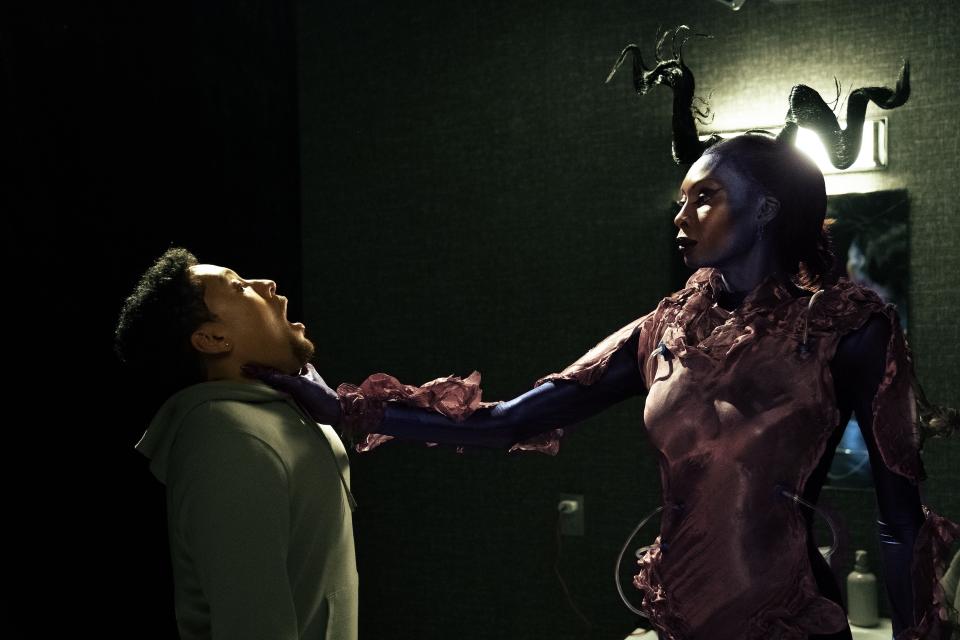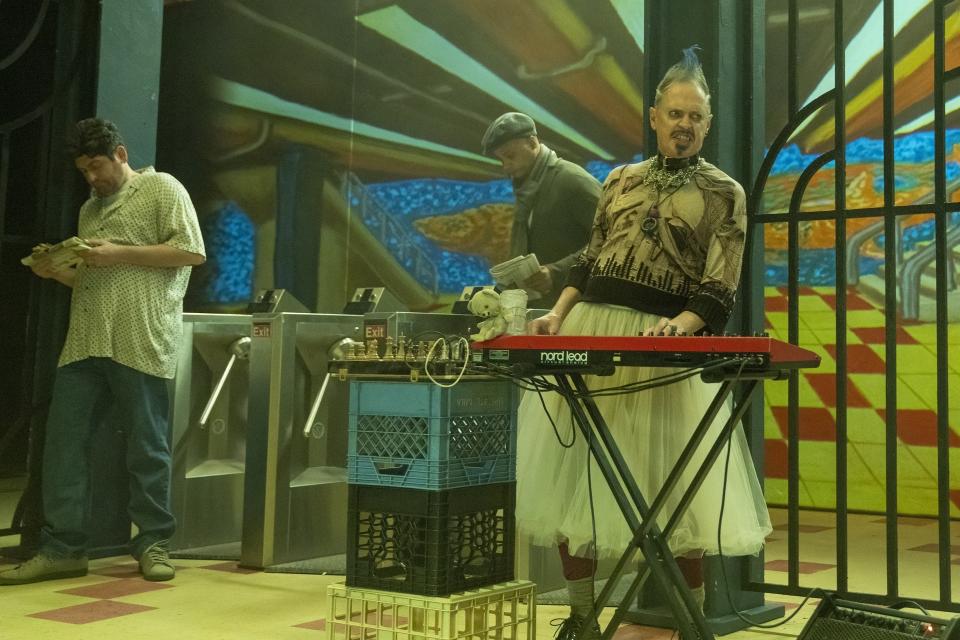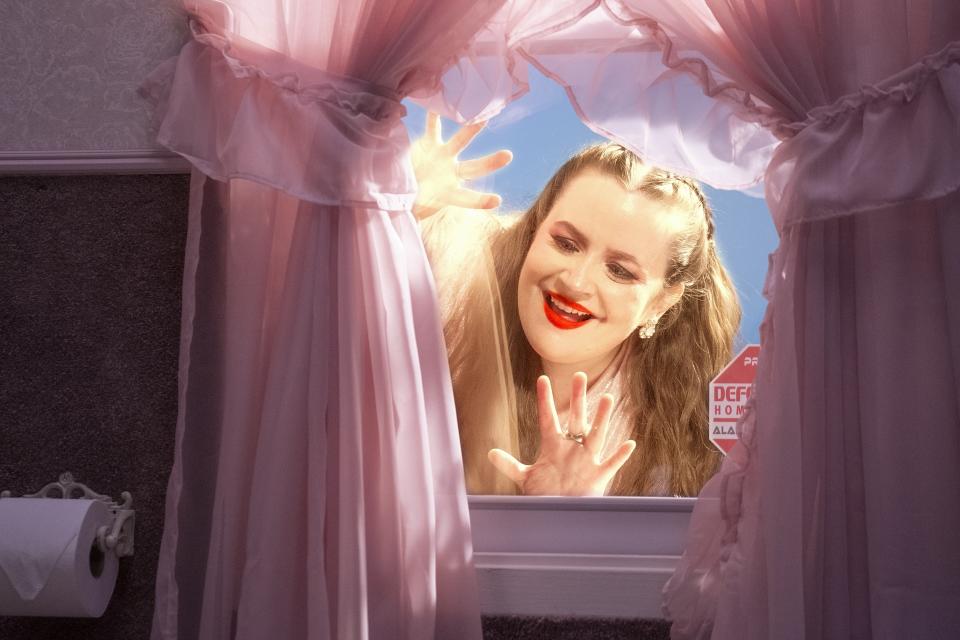Julio Torres’ ‘Fantasmas’ Throws Dim Cinema in the Toilet

According to veteran director of photography Sam Levy, when a cinematographer and a creator sit down to discuss the look of a project, typically, they’ll dig into some visual reference points — your William Egglestons, your Stephen Shores, your Old Dutch Masters. But for the world of “Fantasmas,” Julio Torres wanted to talk to Levy about “World of Warcraft.”
“Fantasmas” is by no means the first heightened world that Torres has created — there’s an anarchic, handmade sense of possibility to everything that happens in “Los Espookys” and there has perhaps never been a more emotionally accurate view of the trash in New York City than in Torres’ first feature, “Problemista.” His newest HBO comedy also had a guiding principle that informed where Levy was going to place the lights in the New Jersey stage the series shot inside.
More from IndieWire
How the Makers of 'Bad Boys: Ride or Die' Pulled Off That One-of-a-Kind Shot
'Interview with the Vampire' Just Dropped the Most Audacious TV Episode of the Year
“Julio told me that ‘fantasmas’ means ghosts. ‘So, all of these people on screen, including my character, may or may not be ghosts. They may or may not really exist. They’re kind of apparitions and the world they live in has this supernatural quality. So if you’re trying to decide between certain creative choices, if you have a dilemma, pick the more ghostly option,’” Levy told IndieWire.
You can find ghosts in all kinds of places, too. “World of Warcraft” and “The Sims,” for instance, have ways of highlighting selected characters with a kind of halo effect that looks perfectly normal in video games. But by applying a similar philosophy in the series to make characters stand out, Levy’s camera keys in on the great unrest of aspiring writer Julio Torres (Julio Torres) as he journeys around an uncanny version of New York City, and it does so in a way that feels strange, novel, and completely intuitive, all at once.
Torres and Levy also looked to the futures being imagined in music — particularly the poetic, half-robot, half-Reggaeton musings of Arca — and even a little bit of dreamy photography, too, in order to build out a sense of the show’s visuals. Paul Schrader’s “Mishima” and the layered, ethereal worlds of French photographers Pierre et Gilles helped Levy build an idea for the kind of dense, colorful, saturated, but supremely ghostly space “Fantasmas” inhabits.

“We would look at light and we would say, ‘Well, how much can we make Julio or Martine or Tomás Matos or Emma Stone glow before we do anything? What lenses and filters will enhance the glow? Can they face in a certain direction? Because it’s a very theatrical show, we didn’t have to shy away from those techniques,” Levy said.
The show’s heightened reality allowed Levy to use some of the tricks of the trade that aren’t necessarily always appropriate for a more naturalistic project—working with gauzes and rear projection to achieve effects in camera that audiences might not even imagine are possible practically or to throwback to the more unabashedly artificial effects of a film like “To Catch a Thief.”
“The great thing about ‘Fantasmas’ was Julio wanted all of those tricks and wanted to know about how you can create a world and create a big look using camera and light,” Levy said.

Rear projection played a big part in how Levy created the city block that recurs again and again in “Fantasmas.” Originally, the filmmakers had planned to build one. But Levy asked about projecting one, given the show’s glowing, ghostly mandate. He shot some footage of the Diamond District in New York and then stitched it together, fragmented it, and abstracted it so that the sense of place wasn’t quite as solid. That doctored, glowing footage was ultimately projected onto the built parts of the set that make up Julio’s New York. But it’s not the most intense instance of rear projection in the show.
“In the scenes with Tomas, who plays Chester, in the car, we actually turned the projects directly onto the actors. It’s very strange looking in a great way. We would never turn a projector on an actor when they’re driving. You always use ambient light to make it feel like they’re in a car and not going through a wormhole,” Levy said. “But they’re not actually in a car. You don’t have to believe that. So it can look the way we’d see an old Hollywood movie.”
For the most checked-out customer support reps (who are also mermaids under the sea), Levy used a technique that would make silent cinema director Erich Von Stroheim proud. “We shot them through an enormous net. It was a very thin mesh black net, so the cameras are just always looking through it. And then my gaffer used these great moving lights [which we] would project on the net.”

Whether the techniques themselves were small or large, the goal was always to expand that ghostly glow and the futuristic whimsy of the series’ tangled world. “We started using this word ‘halation.’ We would use halation in camera to create a glow and Julio and I got very addicted to it. We would sometimes look at each other when we were dialing in [the camera] and we would both say in unison, ‘More halation.’” Levy said.
Levy credits everything from the particular look of Julio’s dreams to the uncanny spotlight courtroom sequences to Torres’ willingness to dial up the look of “Fantasmas” in the way that made the most sense for the story. That willingness comes from Torres’ ability to build a humane set where everyone feels they can contribute while still holding the reins of both the story and his performance.
“He reminds me of an old silent cinema performer like Charlie Chaplin or Harold Lloyd, you know? His mannerisms are so unique and particular and all the while he’s directing everything around him with a very gentle touch,” Levy said. “ Not that I was there, but [that’s] the way I imagine those sets must have been; and the handmade quality of those old films is something that, in our conversations [for ‘Fantasmas’], would just emerge in a very natural way.”
“Fantasmas” releases new episodes Fridays at 11 p.m. ET on HBO and Max.
Best of IndieWire
The Best Father and Son Films: 'The Tree of Life,' 'The Lion King,' 'Nowhere Special,' and More
The 51 Best Sexy Movies of the 21st Century, from 'Spring Breakers' to 'X'
The 14 Best Thrillers Streaming on Netflix in June, from 'Fair Play' to 'Emily the Criminal'
Sign up for Indiewire's Newsletter. For the latest news, follow us on Facebook, Twitter, and Instagram.

 Yahoo News
Yahoo News 
